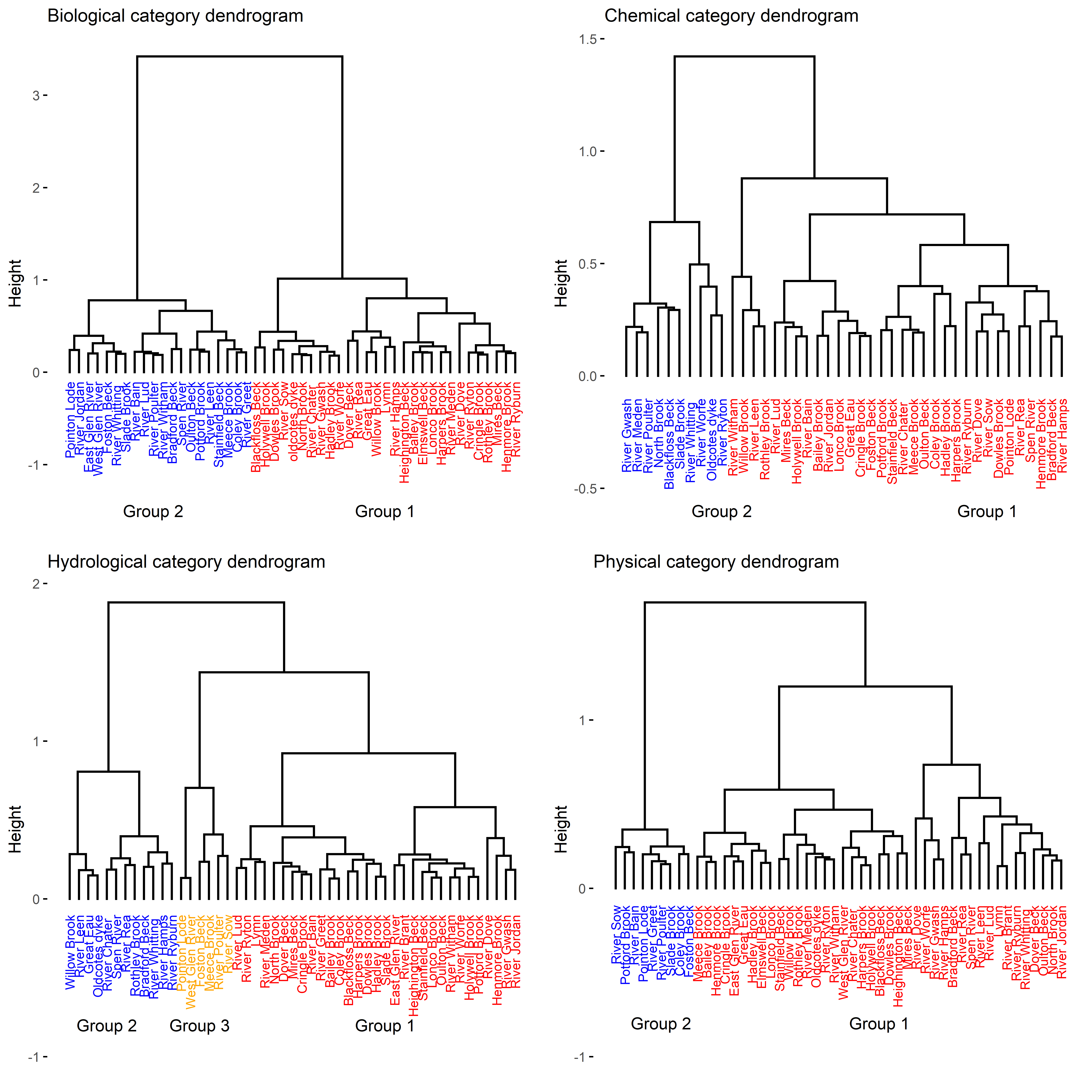Anthropogenic Stream Classification
MSc by Research, University of Nottinghan. Submitted for publication
Supervised by: Dr Matt Johnson and Dr Chris Ives and written with Dr Stephen Dugdale
The Project
My Msc by research project carried out with the school of Geography at UoN focused on the differences and similarities between streams which are now inherantly influenced by anthropogenic activity. Hierarchical cluster analysis was carried out in RStudio using 50 streams from the Midlands, UK. The dissertation is available here but, with the help of Dr. Matt Johnson, Dr. Chris Ives and Dr. Stepehen Dugdale, it has been revised and submitted for publication. The abstract from this publication is available below.
Abstract
River classification has become standard procedure to dictate river management with the aim of reaching an idealised river type. Whilst it is accepted that categorisation is an effective tool for enhancing understanding of river systems, the tendency towards grouping streams and their management into distinct ‘urban’ or ‘rural’ types may obscure realities of stream function and lead to inappropriate management. In addition, there are often discrepancies between chemical and ecological metrics of river condition. Hierarchical cluster analysis was applied separately to the Biological, Chemical, Hydrological and Physical characteristics of 50 anthropogenically impacted rivers in the Midlands of the UK. Comparisons between these separate classifications identified a lack of consistency between categories. Disjointed classification of river types demonstrates the challenge of applying standardised reference states in anthropogenically impacted river systems. Stream attributes are unlikely to respond consistently and predictably to management activities if broader conditions and dynamics of the river and its contextual setting are not accounted for. Instead, it is recommended that management of anthropogenic streams accounts for their current anthropogenic context, recognises them as novel ecosystems, and focusses on ecosystem function and resilience rather than attempting to recreate reference states.

